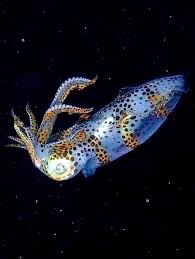
Squid Farming: Breeding for 10 Generations!
ーContinuously cultivated without genetic influenceー
Okinawa Institute of Science and Technology Graduate University:
A research group has succeeded in stable aquaculture of squid.
We are aiming for commercialization in the future.
Difficult to farm:
Since the 1960s, squid farming has been practiced around the world.
However, “squid” is aggressive,
eat mainly live food,
It is vulnerable to environmental changes such as water quality,
Cultivation has been considered difficult.
Aquaculture of bigfin reef squid:
In 2017, the research group began farming bigfin reef squid that live in the waters near Okinawa.
Tips to reduce stress:
Immediately after hatching, they can be accustomed to eating foods other than live food,
According to the growth, change the size of food and aquarium,
I tried my best to reduce stress.
Successful stable aquaculture:
as a result,
Increased the survival rate up to 90 days after hatching from a few percent to 90%.
We succeeded in “stable breeding without genetic influence over 10 generations”.
NHK
https://www3.nhk.or.jp/news/html/20220913/k10013815131000.html
Élevage de calmars : élevage depuis 10 générations !
ーCultivé en continu sans influence génétiqueー
Université diplômée de l’Institut des sciences et technologies d’Okinawa :
Un groupe de recherche a réussi une aquaculture stable de calmars.
Nous visons une commercialisation dans le futur.
Difficile à cultiver :
Depuis les années 1960, l’élevage de calmars est pratiqué dans le monde entier.
Cependant, “squid” est agressif,
manger principalement des aliments vivants,
Il est vulnérable aux changements environnementaux tels que la qualité de l’eau,
La culture a été considérée comme difficile.
Aquaculture de calmars de récif à grandes nageoires :
En 2017, le groupe de recherche a commencé à élever des calmars de récif à grandes nageoires qui vivent dans les eaux près d’Okinawa.
Conseils pour réduire le stress :
Immédiatement après l’éclosion, ils peuvent s’habituer à manger des aliments autres que des aliments vivants,
Selon la croissance, changez la taille de la nourriture et de l’aquarium,
J’ai fait de mon mieux pour réduire le stress.
Une aquaculture stable réussie :
par conséquent,
Augmentation du taux de survie jusqu’à 90 jours après l’éclosion de quelques pour cent à 90 %.
Nous avons réussi “un élevage stable sans influence génétique sur 10 générations”.
NHK
Tintenfischzucht: Züchtung seit 10 Generationen!
ーKontinuierlich ohne genetischen Einfluss kultiviertー
Okinawa Institute of Science and Technology Graduate University:
Einer Forschungsgruppe ist eine stabile Aquakultur von Tintenfischen gelungen.
Für die Zukunft streben wir eine Kommerzialisierung an.
Schwierig zu farmen:
Seit den 1960er Jahren wird die Tintenfischzucht auf der ganzen Welt praktiziert.
“Squid” ist jedoch aggressiv,
hauptsächlich Lebendfutter essen,
Es ist anfällig für Umweltveränderungen wie Wasserqualität,
Der Anbau gilt als schwierig.
Aquakultur von Bigfin-Riffkalmar:
Im Jahr 2017 begann die Forschungsgruppe mit der Zucht von Großflossen-Riffkalmaren, die in den Gewässern in der Nähe von Okinawa leben.
Tipps zum Stressabbau:
Unmittelbar nach dem Schlüpfen können sie an andere Nahrung als Lebendfutter gewöhnt werden,
Je nach Wachstum Größe von Futter und Aquarium ändern,
Ich versuchte mein Bestes, um Stress abzubauen.
Erfolgreiche stabile Aquakultur:
als Ergebnis,
Erhöhte die Überlebensrate bis zu 90 Tage nach dem Schlüpfen von wenigen Prozent auf 90 %.
Uns ist eine „stabile Zucht ohne genetischen Einfluss über 10 Generationen“ gelungen.
NHK
Researchers in Japan see hope in method to breed hard-to-farm squid
Researchers in Japan say
they have successfully developed an aquaculture system for squid,
which is a healthy food source for fish-loving Japan but notoriously hard to breed.
A group at the Okinawa Institute of Science and Technology Graduate University
says its aquaculture technique has the potential to be commercialized.
Researchers around the world
have been trying to farm squid since the 1960s with little success.
That’s due to the animal’s aggressive trait, its strong preference for live bait and sensitivity to changes in water conditions.
Around 450 types of squid are said to exist around the world.
But the researchers say
all the species of squid in Japan’s waters have been declining since the 1980s.
Catch volume
has plunged to about 10 percent of the peak level, and prices are rising.
NHK WORLD-JAPAN News